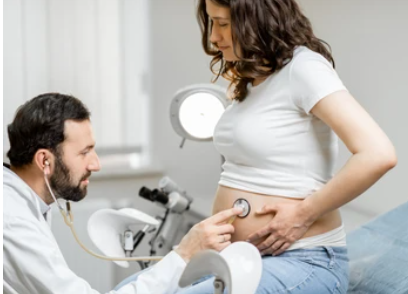Cannabis and Women’s Health
Cannabis, popularly known as marijuana, is a plant that is used both recreationally and medicinally. Cannabis can be ingested in a variety of ways, including smoking, vaping, and eating edibles. Some people feel that cannabis can help with a variety of medical issues, including chronic pain and anxiety, to mention a few.
While women have historically been more hesitant to embrace cannabis, there is an array of medically legitimate reasons why they may want to incorporate it into their health routine.
Women’s bodies are regularly changing, presenting a unique set of health challenges from menstruation, menopause, and hormonal imbalances. Women using cannabis to deal with symptoms and health issues is not new, and yet cannabis remains highly untapped by many women who are either unaware of its benefits or hesitant to try it due to the lingering stigma around marijuana use.
What is cannabis?
Cannabis, also known as marijuana, kush, or weed, is a plant that is used for both recreational and medical use. This plant contains several active ingredients with the two main ingredients being THC and CBD. THC is the active ingredient that delivers psychoactive effects which makes it a popular recreational drug. CBD, on the other hand, has no psychoactive effects but has many medical benefits which make it a new popular go-to remedy for several medical conditions including pain, anxiety, insomnia, and even cancer treatment.
How to use cannabis for reproductive health
If you get cramps during your menstrual cycle, you should try using topicals, which are cannabis-infused creams or lotions. Topicals are useful for focused pain treatment since they may be applied directly to the skin. Edibles are also a fantastic way to consume cannabis because they are easy to swallow, strong, and can provide relief for up to 12 hours, which is far longer than most other cannabis consumption techniques. Consider your requirements while selecting a consumption technique. For example, if you want to consume on the go, you'll need a portable consumption method, and if you want to consume discreetly, you'll need a discrete consumption method. Tiredness or laziness are two potential side effects of cannabis use.
How Cannabis Benefits Women’s Gynecological Health
Cannabis elicits its effects on the body by interacting with the endocannabinoid system, or ECS. The ECS is a major self-regulatory network that is responsible for regulating a wide array of functions, such as mood, metabolism, appetite, immune system response, pain response, and more. The endocannabinoid system also plays an integral part in female reproductive processes.
The ECS regulates these various functions through substances called endocannabinoids, which bind to cannabinoid receptors in the brain and throughout the peripheral nervous system and immune system. As fluctuations occur and a function becomes unbalanced, the EC system responds by synthesizing endocannabinoids on demand. Those endocannabinoids then bind with cannabinoid receptors, triggering a series of chemical reactions that bring functions back to balance so they run optimally.
Sometimes, however, the ECS can become deficient in endocannabinoids. This can cause endocannabinoid system dysregulation, leading to an imbalance in the body and eventually health issues.
That’s where the benefit of cannabis comes in. Cannabis contains more than 100 plant-derived cannabinoids, called phytocannabinoids. Like endocannabinoids, these cannabis-derived cannabinoids are able to interact with the body’s cannabinoid receptors. In essence, the cannabinoids derived from cannabis can serve to supplement the body’s own endocannabinoids, helping ensure the ECS performs its regulation duties effectively.
Marijuana and PMS
Premenstrual Syndrome (PMS) and Premenstrual Dysphoric Disorder (PMDD) are conditions that affect a woman’s physical, mental, and behavioral health during specific days of the menstrual cycle. Symptoms can range from mild cramping, fatigue, and mood swings to depression, headache, and trouble sleeping.
Unfortunately, there are very limited studies regarding the use of marijuana for PMS. However, THC has already shown to increase feel-good neurotransmitters like dopamine and serotonin, as well as help relieve muscle pain, reduce migraines, and improve sleep. The potential for marijuana to treat these symptoms can, as a whole, lead to an overall helpful aid to reduce PMS and PMDD.
Benefits of Cannabis for Menstruation Symptoms
Most women endure abdominal cramps, muscle aches, nausea, diarrhea, exhaustion, and spasms before and during their periods. A rising number of women are turning to cannabis to alleviate these symptoms, which can range in severity and be severe at times.
While there isn't much research on cannabis's effects on period pain, there is a lot of evidence on its pain-relieving capabilities. Cannabis has also been shown to have anti-inflammatory properties, which may help to alleviate pain associated with uterine inflammation. Menstrual pain (dysmenorrhea) is being added to the list of diseases that qualify for medical marijuana in several states, according to politicians and advocates.



